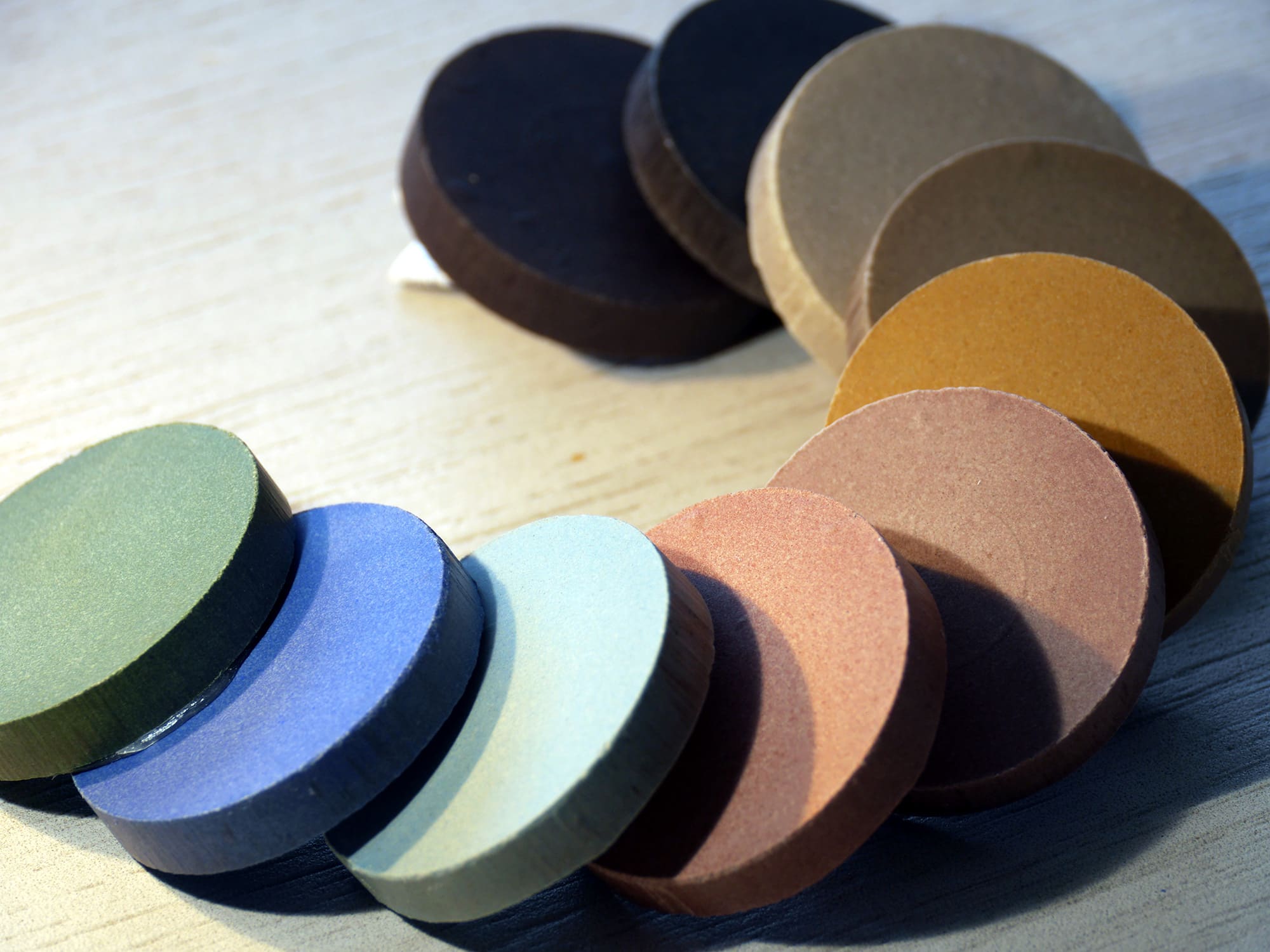Body stains are inorganic pigments that give full body porcelain stoneware coloring. The term “gres” is typical of ceramic materials with a high degree of sintering, characterized by a crystalline phase immersed in a prevailing glass phase. The microstructure of the cooked product is characterized by very low porosity glass matrices from which very low water absorption results, less than 0.1-0.3%; a particular resistance to physical-mechanical and chemical stresses including resistance to abrasion, frost, bending, thermal shock, chemical agents, staining.
The color of a tile’s mass and consequently of its surface have always been natural characteristics of raw materials used for the bodies, but it is also possible to obtain other different specific colours when pigments are added.
In more recent times, due to the increasing demand for aesthetic value for porcelain stoneware tiles and large slabs, most aesthetic expressions are mainly based on imitation —on the reproduction of stones or natural materials— not only as regards to surface decoration but also to the entire body of the ceramic tile decoration.
By mixing spray-dried powders and granules of different colors, different shades and grains can be obtained from tile to tile. Furthermore, the new loading and pressing ceramic mixture systems allow us to create grain and materic effects, completely visible under any prospective of the tile/large ceramic slab, to fully simulate natural material.
The technological systems that are currently out on the market allow— through integrated vision systems — to synchronize graphic and surface digital printing effects concerning the colouring of title’s body, for a unique value finish that was unimaginable until recently. For the entire mass of porcelain stoneware colouring, it is possible to use both raw materials and natural oxides, as well as synthetic ceramic pigments. Depending on the tone and color intensity we would like to have, the percentages required for coloring may vary. However, a high percentage of dye can affect the final characteristics of the mass being cooked, if not purposely designed for this application—for example by exerting a melting action or by changing the product’s vitrification temperature and its porosity—.

Inco offers a wide range of inorganic pigments for high-quality ceramic bodies, high stability, and unmatched color consistency. Intense and constant tones, precise and unchanged granulometric distributions over time, extremely contained salinity. Numerous quality-checks are carried out throughout the production cycle to guarantee quality. The pigments for Inco’s mixes impart intense and constant colors added in very small percentages to the ceramic mixture; furthermore, they do not alter the shrinkage and the characteristics of the ceramic body itself.
Among the pigments for ceramic bodies there are:
A wide range of colours characterized by different shades, from black to blue to brown, to orange, beige, red, pink, yellow, turquoise or green. We are the colour specialists. We can develop colours on request and perfectly tailored for each individual customer, to develop together products with a high aesthetic and technical value.